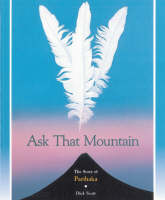"Taking as their symbol the white feather, the chiefs Te Whiti and Tohu led Parihaka in one of the worlds first-recorded campaigns of passive resistance" Ask That Mountain - Dick Smith
 Parihaka settlement lies in the Taranaki region of Aotearoa, located between Mount Taranaki and the Tasman Sea. In the late 1800s, Parihaka was reputed to be the largest Māori village in New Zealand with a population of about 1500 and was described as the most populous and prosperous Māori settlement in the country. Parihaka had its own police force, bakery and bank and used advanced agricultural machinery. The village was founded in about 1866 by Māori chiefs Te Whiti o Rongomai and Tohu Kakahi on land seized by the government during the unlawful post war land confiscations of the 1860s.
Parihaka settlement lies in the Taranaki region of Aotearoa, located between Mount Taranaki and the Tasman Sea. In the late 1800s, Parihaka was reputed to be the largest Māori village in New Zealand with a population of about 1500 and was described as the most populous and prosperous Māori settlement in the country. Parihaka had its own police force, bakery and bank and used advanced agricultural machinery. The village was founded in about 1866 by Māori chiefs Te Whiti o Rongomai and Tohu Kakahi on land seized by the government during the unlawful post war land confiscations of the 1860s.
Parihaka, the principal Maori stronghold in New Zealand, is an enormous native town of quite an imposing character….I never before saw such number of Maoris. It was such a picturesque sight, such gay colours, fine-looking men and pretty girls.
- Mary Dobie, The Graphic, 1881 (Ask That Mountain - Dick Scott)
At dawn on 5 November 1881, 1600 troops and militia entered the Parihaka settlement, many on horseback. Although troops were met by hundreds of tamariki skipping, singing and offering food they, nevertheless, continued with their attack. In her book Days of Darkness on page 218, historian Hazel Riseborough claims:
"Europeans were concerned about their superiority and dominance which, it seemed to them, could be assured only by destroying Te Whiti's mana. As long as he remained at Parihaka he constituted a threat to European supremacy in that he offered his people an alternative to the way of life the European sought to impose on them."
The military assault on Parihaka with all its ensuing atrocities mark the 5th November, for many, as being the blackest day in New Zealands history.
The following 30 minute Photographic Survey was produced by Taranaki Museum in 1981




Add a comment to: Parihaka – We look for Peace and we find War